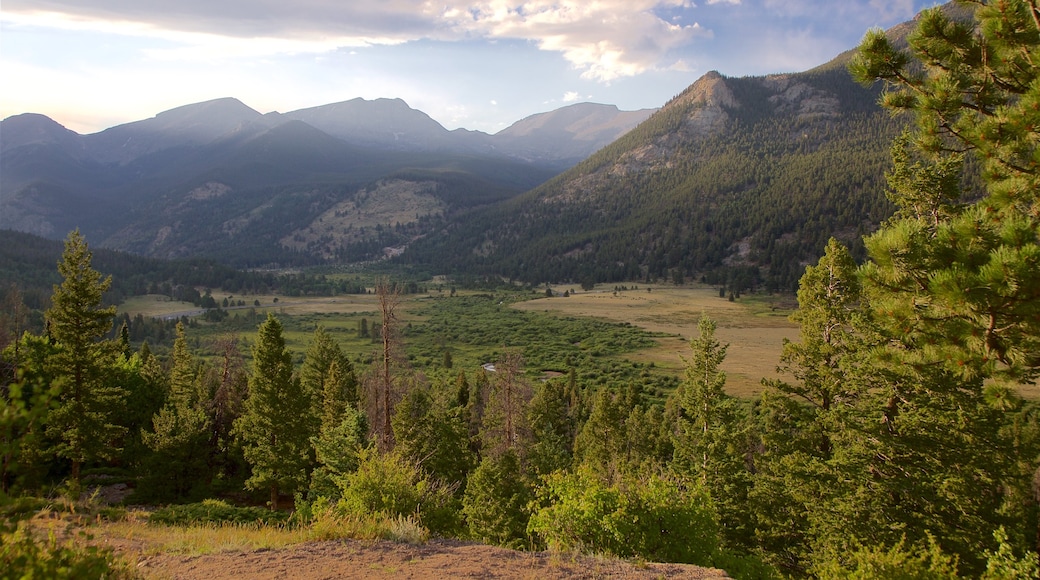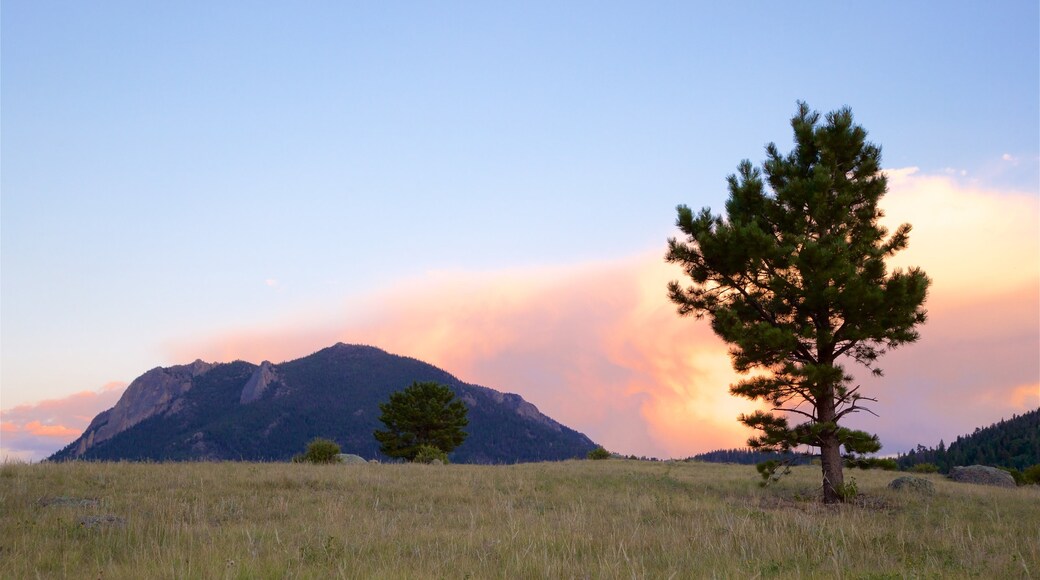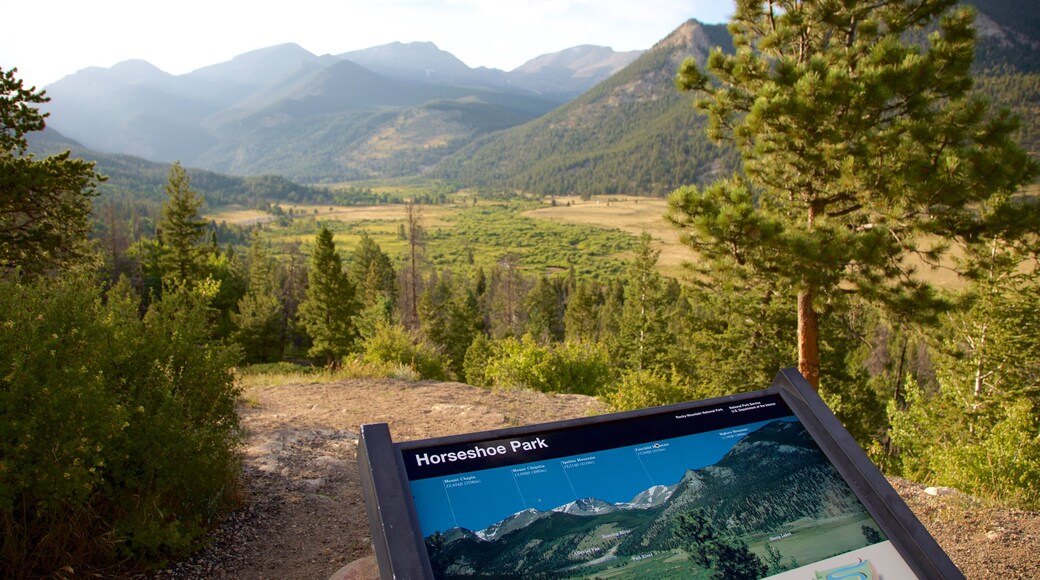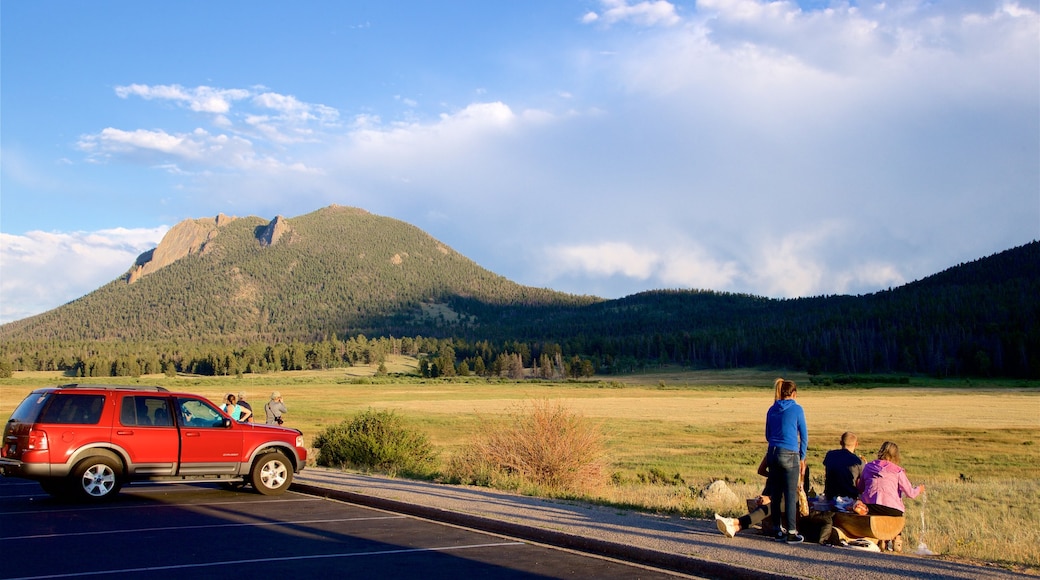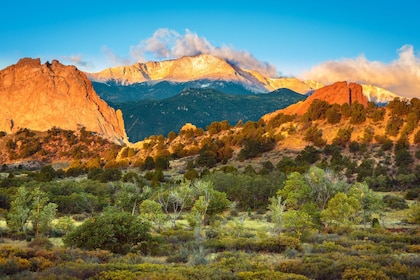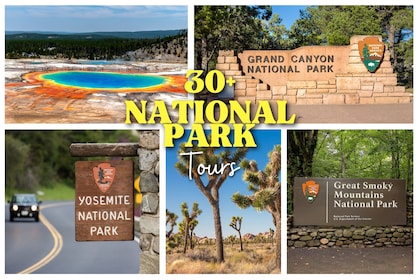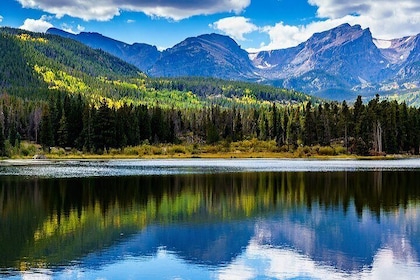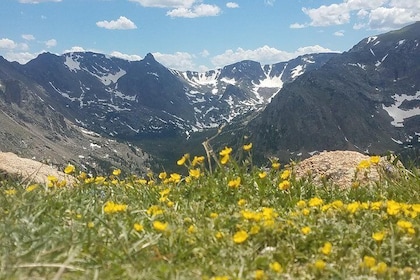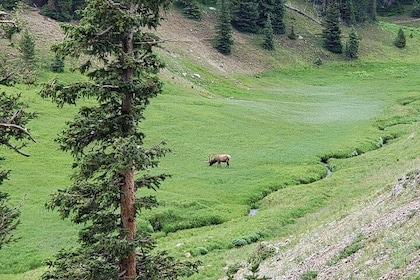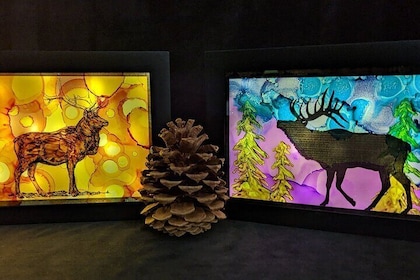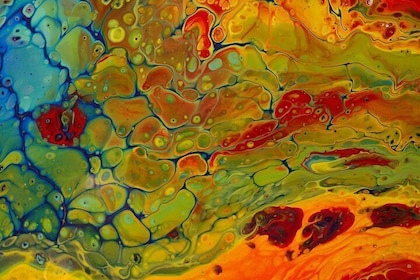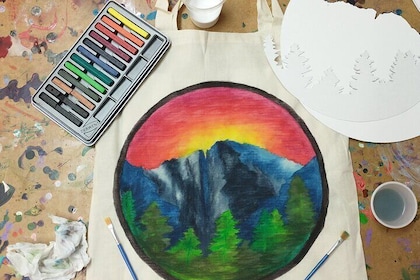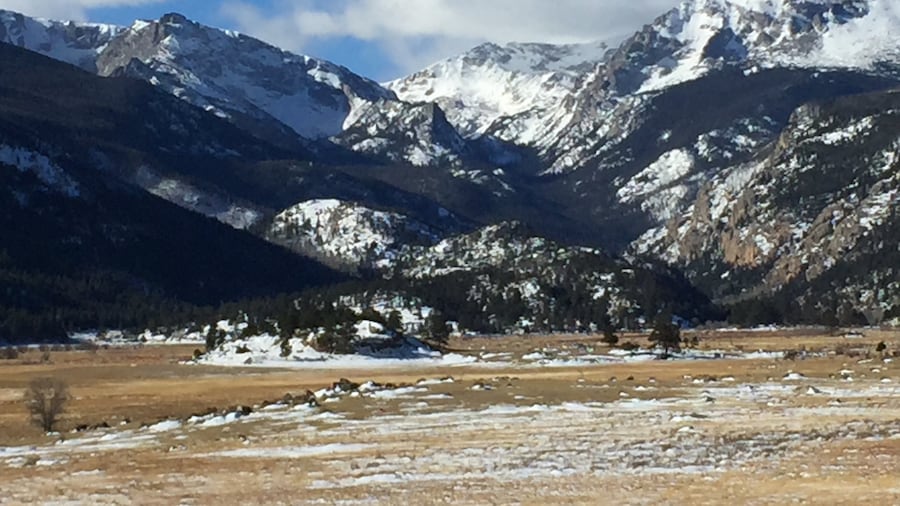Hike along lakeside trails, admire the scenic views from overlooks and spot big horn sheep and elk grazing in the meadows of this park within a national park.
Located at the lower levels of Rocky Mountain National Park, Horseshoe Park comprises a U-shaped valley, created by a 500-foot-wide (150-meter) glacier. Because of its grassy meadows, mineral licks and wetlands, wildlife abounds here. Bring your binoculars for the best chance of spotting elk, bighorn sheep and birds.
Come in September or October and listen for the mating call of bull elk. Known as bugling, this deep and distinctive cry can be heard from early morning until dusk and is part of the elk mating ritual. During this period, male elk also fight with each other and clash antlers, and can be observed herding females together. Remember these are wild animals so keep your distance and stay only on designated roadways and trails.
For yet more wildlife watching, venture to Sheep Lakes, where kettle ponds created by glacial deposits dot the landscapes. Herds of bighorn sheep come here between May and June to sip the water and visit the mineral lick, which provides much-needed nutrients.
Horseshoe Park is also a popular bird-watching hotspot. During summer, look for species including bluebirds, broad-tailed hummingbirds, MacGillivray’s warblers and dusky fly- catchers, among others.
Hikers in the Horseshoe Park vicinity can follow the 6.2-mile (10-kilometer) Lawn Lake Trail, which weaves along the edge of the Roaring River to Lawn Lake and Crystal Lakes. This moderate trail remains relatively quiet even during the busier summer months. Also of note is the Alluvial Fan Trail, where a short interpretive path leads through a boulder field formed by a 1982 flash flood.
If you aren’t up for the hike, simply drive to the scenic Ridge Junction overlook, which is located along U.S. Highway 34 near Deer Ridge Junction. From here, panoramic views of glacial valleys and soaring peaks can be seen.
Horseshoe Park is accessible via the Fall River Entrance Station on the Fall River Road. There is a fee to enter the Rocky Mountain National Park. The nearest visitor center is Fall River Visitor Center, which is open daily from late spring to mid fall.
